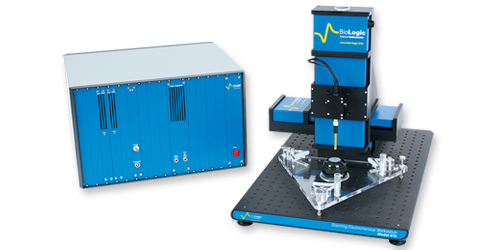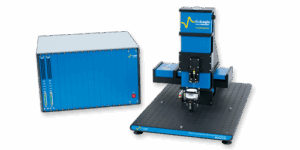Description
SKP470 Scanning Kelvin Probe System
Maps and quantifies the contact potential of a metallic sample in humid or dry atmospheres
The Model SKP470 Scanning Kelvin Probe operates using a vibrating capacitance probe and through a swept backing potential, the work function difference is measured between the scanned probe reference tip and sample surface.
A surface work function can be directly correlated to many aspects of surface condition including corrosion potential. Moreover, as the technique utilises a capacitance probe, such measurements can be made on surfaces in gaseous atmospheric conditions or even under insulating coatings.
The capacitance probe may also be used in height tracking mode to maintain a constant height between the probe tip and sample surface, allowing measurements to be made over uneven surfaces.
The SKP470 is the very latest development in Kelvin Probe technology incorporating many new features affording the user performance, flexibility and ease of use.
Materials
- Detection of defects in a steel cord – rubber coating interface
- Investigations of sol-gel coatings for surface modification of Magnesium alloys
Fundamentals
- Surface photovoltage analysis of multicrystalline silicon
- Electrochemical studies of iron meteorites
- Latent fingermark visualisation using a scanning Kelvin probe
Corrosion
- Studies of alloy-specific corrosion inhibition by novel DOPA containing proteins
- Height regulated studies of polymer-metal interfaces in corrosive environments
- Investigation of Filiform corrosion mechanisms in coated Aluminium.







